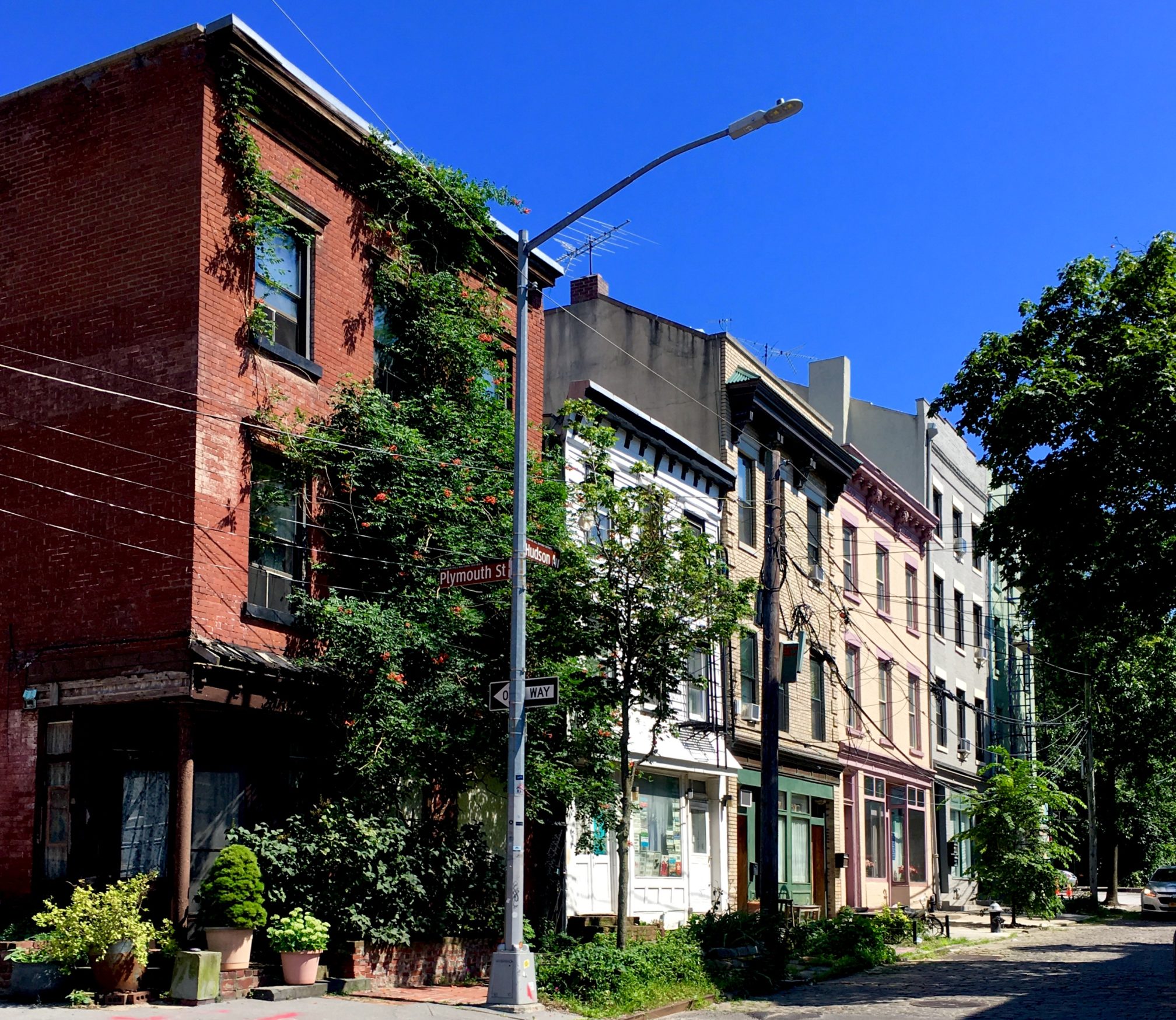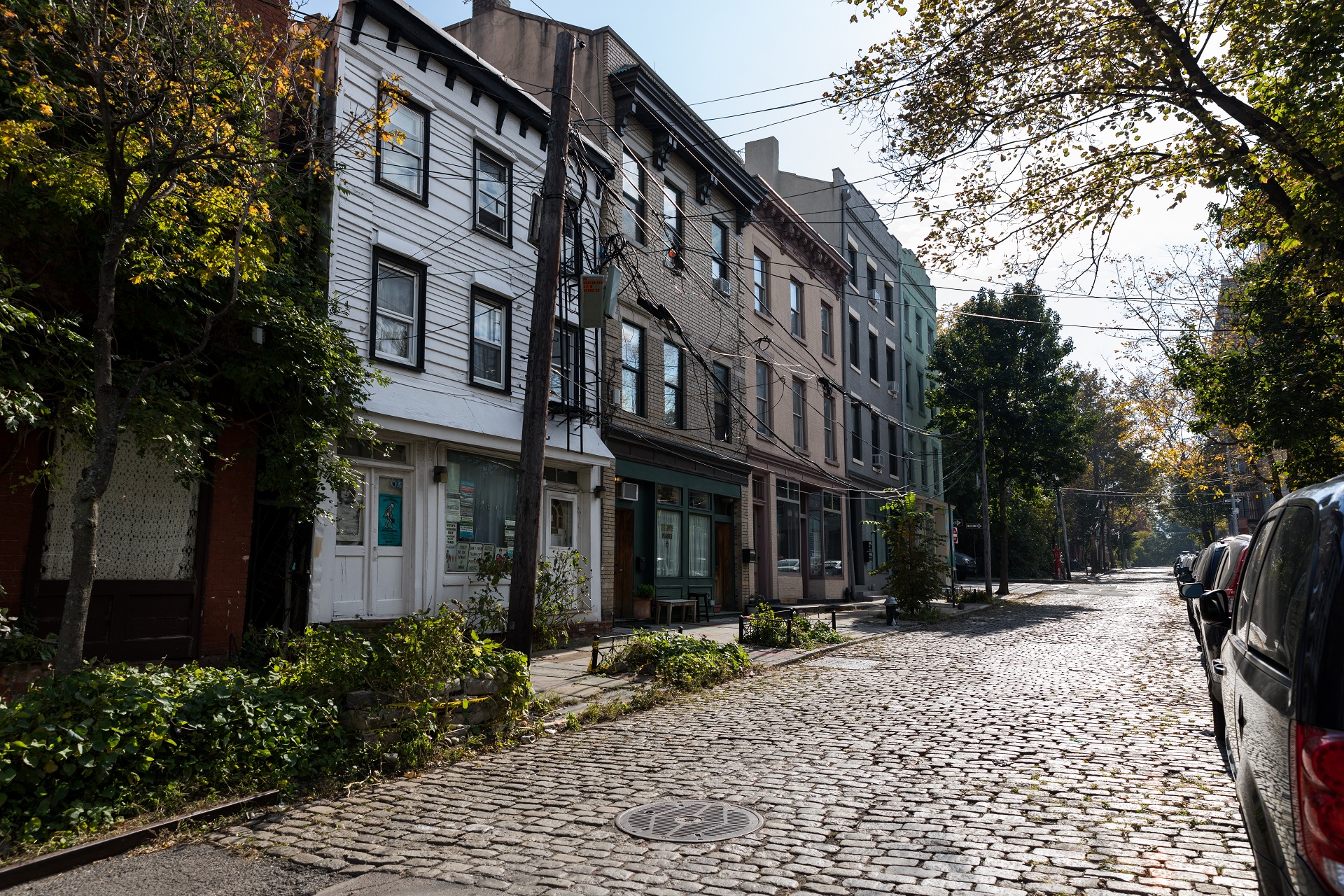10 things to know about Vinegar Hill

Welcome to picturesque Vinegar Hill. Eagle photo by Lore Croghan
Oh DUMBO, we love you.
But sometimes we need a brief break — from the exuberant tourists, the long lines waiting to buy lunch from the food trucks, the relentlessly pounding jackhammers outside our office windows.
Don’t get me wrong. DUMBO is magnificent.
